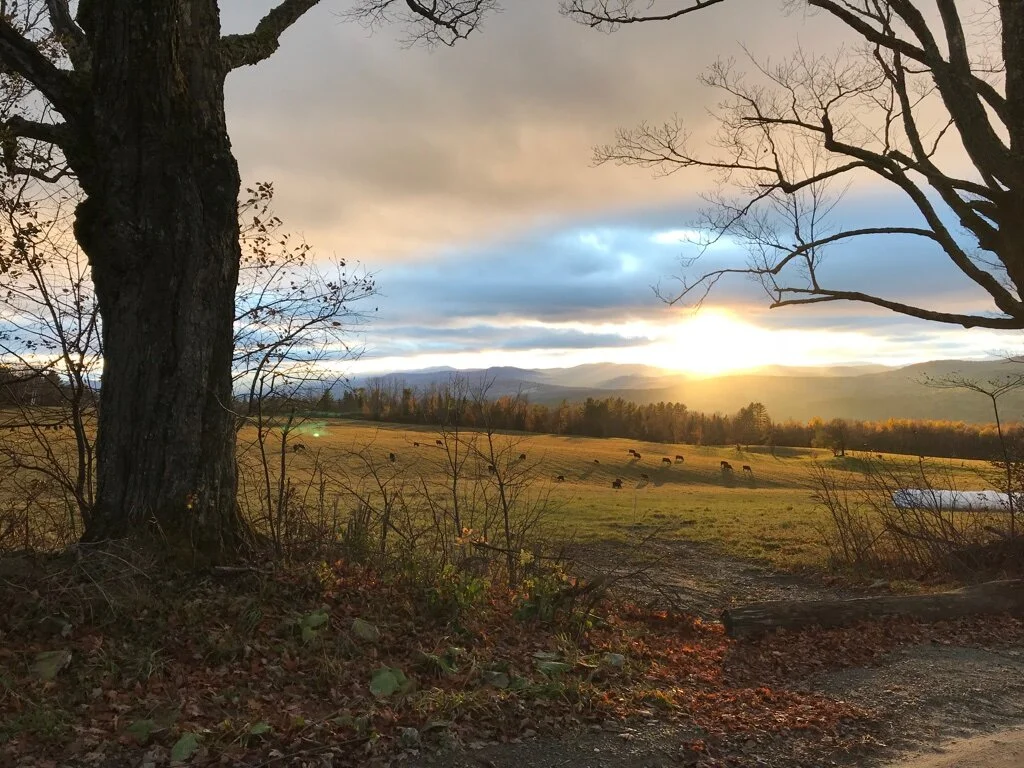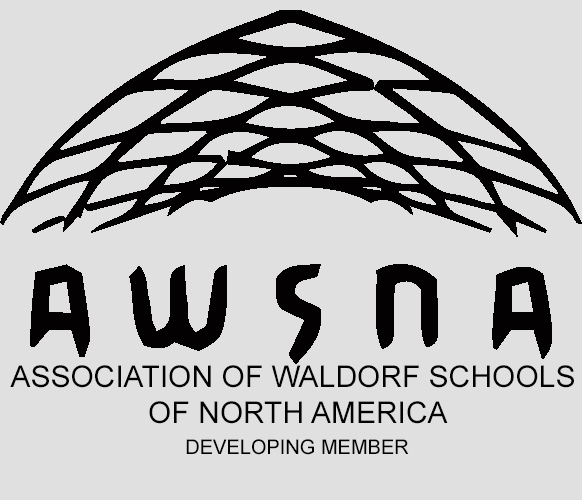by Lottie Maker, OVWS 3/4 Grades Teacher
This year has brought a myriad of changes to all of our lives. The routines of daily life have been tipped upside down and all that we know and expect is shaken by an ever-shifting landscape of information and expectations.
In the midst of that background of uncertainty I have cherished the opportunity to be a part of creating an environment where children can be together in person, in communion with the natural world. As we’ve moved our programs outside, I have watched as the children lived into the experience of immersing themselves in the landscape, developing a sense of place and connection that has deepened my understanding of what it means to educate the whole human being.
Each morning we watch the mist rise over the mountains to the East. Over the first weeks of school, we bore witness as summer green turned to the fiery orange and rusty red of October. As the leaves fell we noticed the contours of the distant roads curving up the hills. Houses tucked away in the trees gave away their presence with thin wisps of smoke rising from chimneys.
The gift of this year has been finding those places where the curriculum is deepened and lifted up by the connection and integration with the land. Our outdoor classroom sits in the midst of a beautiful meadow at the top of a path down to the woods. During our animal study, this made it a perfect launching point for forays into the fields and forest in search of habitats to explore and creatures to observe.
As part of a measurement study, the class built a simple board balance to measure and compare weights. By attaching a pivot point at the center of a board, the class could measure the approximate weight of items by placing them on one end of the board and adding known weights to the opposite side.
This in itself was an activity well-suited to our outdoor setting. By simply stepping outside our tent to the grassy yard beyond, we more than doubled the size of our “classroom.” There was room for taking turns in the construction of the balance and then weighing various items. Students cycled between this hands-on, practical work and moving to their desks to record their findings in their notebooks.
The real beauty of the experience came later during recess. A group of students wanted to use the board balance to weigh a field stone we’d recently excavated from the cattail patch where students like to play and build forts. It was fairly large and difficult to maneuver. The excavation had required several students taking turns slowly rolling and lifting the stone out of the play yard.
The group of students positioned the stone on one end of the balance and set to work adding counterweights. They added a 20 lb weight. The stone end of the balance sat firmly on the ground. They added a second 20 lb weight -- still no movement. They added one 5lb weight and then another -- still no movement. They added a 2lb stone, and then a 1 lb stone. At 53 lbs, they still didn’t have enough counter weight. Having used all our known weights, the group was temporarily stymied, unsure of how to proceed. Then one student looked over at the neatly stacked pile of tree stumps recently gathered as future seating around a fire ring in our forest classroom.
Eagerly, students realized they could find the weight of a stump and use that weight as another “known” weight to find the weight of the stone. Together they removed the stone and set to work. The interconnected nature of their play, their classwork, and their growing intuitive understanding of the landscape has brought new meaning and purpose to the children’s studies.
As the weather has shifted and cold winds sweep through our valley, we continue to spend the majority of our day out on the land. Over the last few weeks we’ve started each morning of our local geography study with exploratory walks through the fields and forests surrounding the school. Students marvel as we emerge from a pine stand into the well-known field below our forest classroom. They ask each other, how did we get here from there? Did we just go in a circle? Through these questions and the pondering of the answers, their sense of place broadens and deepens. When we return to our desks we draw maps of all we’ve seen and explored.
In the last week of our study, students started each morning by studying a hand-drawn map of the landscape around our school. The view stretched from our outdoor classroom in the northwest corner to the Kingsbury branch of the Winooski river to the east. Each morning a new point was marked on the map and students mused over what area it represented and how best to get there:
“We could start by going down the path and then cut into the woods by the fence and head to the mossy spot,” suggests one. Another student chimes in “Or we could head to Kingsbury Clearing and cut back along the river like we did last week.”
They discuss which route is most direct, which covers difficult terrain, which might offer a glimpse of unexplored regions. After coming to a consensus, we set off. When they find the spot each morning they fan out searching for a sign that they’ve found the right location. A shout goes up and all the students gather around the tree where the latest clue hangs from a purple ribbon - a piece to add to the growing puzzle back in our classroom. They’re fairly certain the puzzle is a map of our indoor classroom but they’ll have to wait for the final pieces to be sure and to see what comes next!
As I reflect on where we are as a school, I am incredibly grateful for the gift of the last three months. Though it was the pandemic that necessitated the shift to the land, I am continually awed by the lessons I have gained as a teacher. Our immersion in the outdoors has created for us all a more intimate relationship with the land, the creatures we share it with, and the seasonal rhythms of the natural world.



